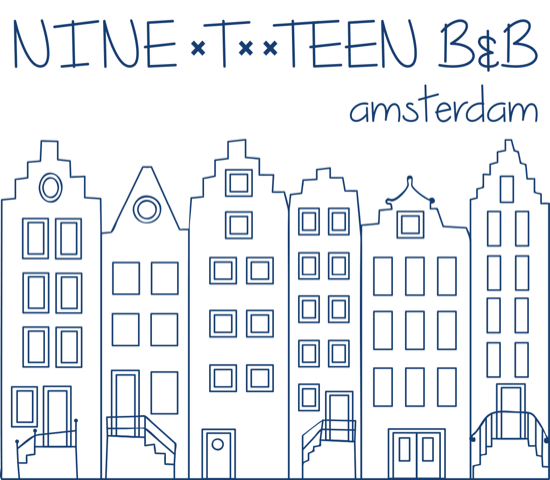Bed & Breakfast Nine(T)Teen is located in the lively student neighbourhood The Pipe, you can walk around for hours, with all the lovely terraces, any imaginable cuisine and A LOT of cafes. From the perfectly coiffed Sarphatipark to the famous Albert Cuyp market, in this old folk neighbourhood people from all over the world live side by side.
SURROUNDING AREA:
Artists and students in the Pipe.
The Pipe is a meeting spot for artists, students and free minds. A lot of streets are named after artists, like the Vincent van Goghstraat and the Ferdinand Bolstraat. The last mentioned street is named after Bol, a former student of Rembrandt. At the end of the 19th century Piet Mondriaan also worked on his pioneering art in this neighbourhood, at the Ruysdaelkade 75 to be exact.
Albert Cuyp market & Heineken Brewery
The pipe has always had a bohemian flair, but in the sixties and seventies there was a small cultural and culinary landslide. The rapid growth of the Heineken Brewery attracted Spanish, Turkish, Moroccan and Surinamese workers who sold their own dishes and ingredients on the ever popular Albert Cuypmarkt. In this way the Pipe grew and became a lively multicultural neighbourhood with an enormous selection of authentic restaurants, cozy cafes and trendy catering. And, of course, the former Heineken brewery, where you can learn how beer was brewed in the past, the Heineken Experience.
Architecture in The Pipe
In the P.L. Takbuurt every lover of architecture can find what their heart desires. The neighbourhood with 'laborer's palaces' is known as one of the most beautiful examples of Amsterdamse School . You can enjoy the unique style of the Amsterdam School yourself with a unique bike route along the coast and architecture of the Amsterdam School. The bike route takes you through the neighbourhoods Westerpark Oud-West , and The Pipe and takes approximately 3 hours. You can find a guide for € 2,50 at the I amsterdam Visitor Centres and the Museum Het Schip.
The official name of the neighborhood was YY, because Amsterdam was divided into 50 neighborhoods all indicated with letters (A-Z, followed by AA-ZZ). The regular name soon became The Pipe. It is uncertain where that name came from. The oldest explanation is from the Amsterdamsche Courant (1892): "The reason why the Pipe is called the pipe, can be seen best between eight and nine o'clock in the morning. When you are posted in the Hemony, Van Wou, Van der Helst, which are in fact funnels for the Pipe, then you see what kind of flow of people rushes through the streets towards the old city; then they become in essence long wide pipes, living 'clouds' blowing out to that part of the city where the offices are and business is done." Later, other explanations were voiced, among others that the name is derived from the word pipe meaning long, straight polder ditch.Ferdinand Bolstraten
Geography
The Pipe is located south of the Centrum, between the Boerenwetering in the West and the Amstel in the East, and between the Singelgracht in the North and the Amstelkanaal in the South. It borders on the rest of South Amsterdam and the city sections Center and Oost.
The main connecting roads are the Ceintuurbaan and Stadhouderskade in the East-West direction, and the Ferdinand Bolstraat, Van Woustraat and Amsteldijk in the North-South direction. Tramlijnen 3, 4, 12 and 24 ride through the neighbourhood.
A (deep) underground station is since 2019 located under the Ferdinand Bolstraat between the Albert Cuypstraat and the Ceintuurbaan.Noord-Zuidlijn De Pijp
The Ceintuurbaan divides the Oude- or North-Pipe from the slightly newer Nieuwe- or South-Pipe, which also includes the Diamantbuurt. The South edge of The Pipe is built in the style of Plan Zuid, and because of this has a number of group houses in the style of Amsterdamse School.
Most of the streets in the Pipe are named after Dutch painters; the exception to this is the Diamond neighbourhood.
